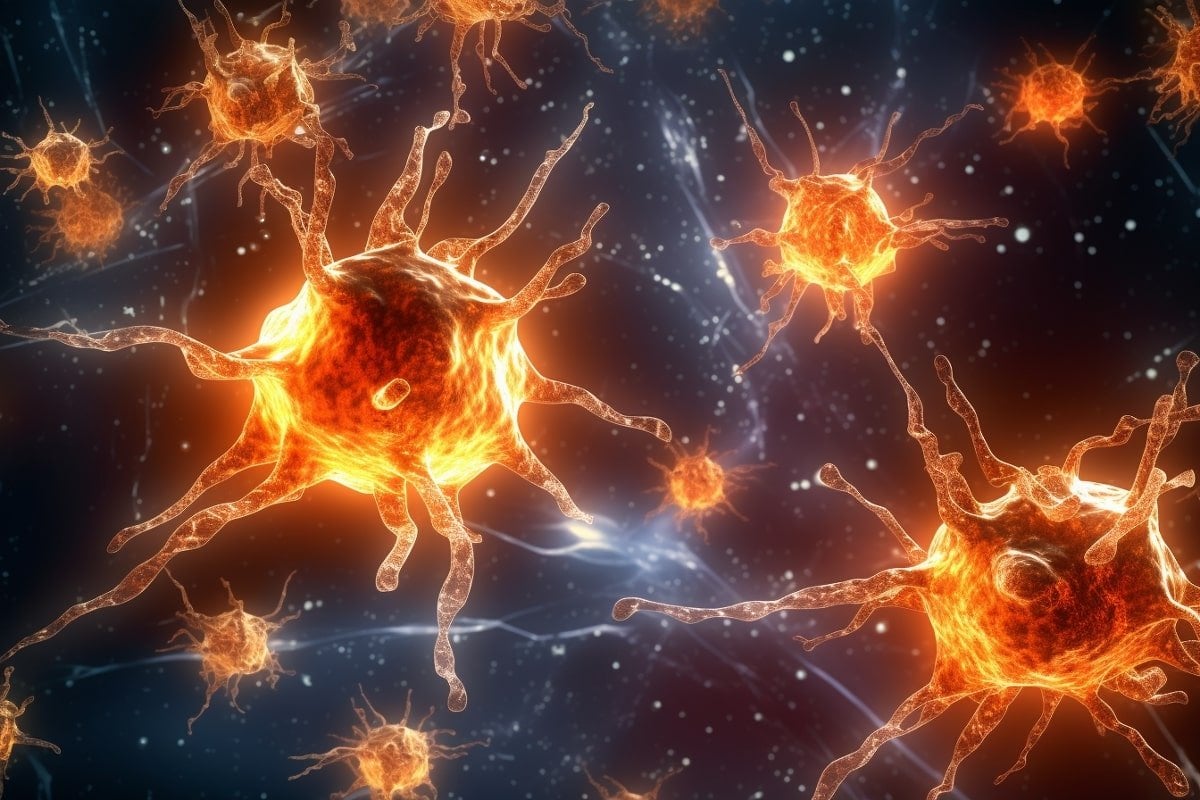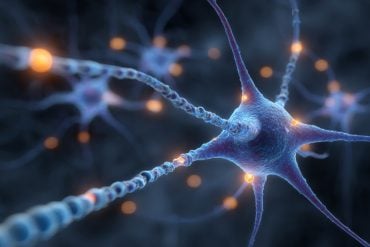Summary: Researchers have discovered a new link between the Epstein-Barr virus (EBV) and the progression of multiple sclerosis (MS).
Their study revealed that certain antibodies, originally aimed at fighting EBV, can mistakenly target proteins in the brain and spinal cord, leading to MS symptoms. This antibody misdirection was found in roughly 23% of MS patients studied.
The findings highlight the need for personalized therapies to combat MS.
Key Facts:
- The Epstein-Barr virus (EBV) infects most people early in life and remains dormant in the body, but has been linked to the progression of multiple sclerosis.
- In around 23% of MS patients, antibodies against EBV can mistakenly target a similar protein in the brain and spinal cord, potentially causing MS symptoms.
- The high variation in antibody response among MS patients underscores the need for personalized therapies.
Source: Karolinska Institute
Researchers at Karolinska Institutet in Sweden have found further evidence for how the Epstein-Barr virus can trigger multiple sclerosis or drive disease progression.
A study published in Science Advances shows that some individuals have antibodies against the virus that mistakenly attack a protein in the brain and spinal cord.
The Epstein-Barr virus (EBV) infects most people early in life and then remains in the body, usually without causing symptoms.
The link between EBV and the neurological disease multiple sclerosis (MS) was discovered many years ago and has puzzled researchers ever since.
Increasing evidence, including two papers published in Science and Nature last year, suggests that EBV infection precedes MS and that antibodies against the virus may be involved. However, the molecular mechanisms seem to vary between patients and remain largely unknown.
“MS is an incredibly complex disease, but our study provides an important piece in the puzzle and could explain why some people develop the disease,” says Olivia Thomas, postdoctoral researcher at the Department of Clinical Neuroscience, Karolinska Institutet and shared first author of the paper.
“We have discovered that certain antibodies against the Epstein-Barr virus, which would normally fight the infection, can mistakenly target the brain and spinal cord and cause damage.”
Misdirected antibodies
The researchers analyzed blood samples from more than 700 patients with MS and 700 healthy individuals. They found that antibodies that bind to a certain protein in the Epstein-Barr virus, EBNA1, can also bind to a similar protein in the brain and spinal cord called CRYAB, whose role is to prevent protein aggregation during conditions of cellular stress such as inflammation.
These misdirected, cross-reactive antibodies may damage the nervous system and cause severe symptoms in MS patients, including problems with balance, mobility and fatigue. The antibodies were present in about 23 percent of MS patients and 7 percent of control individuals.
“This shows that, whilst these antibody responses are not required for disease development, they may be involved in disease in up to a quarter of MS patients,” says Olivia Thomas.
“This also demonstrates the high variation between patients, highlighting the need for personalized therapies. Current therapies are effective at reducing relapses in MS but unfortunately, none can prevent disease progression.”
T cells may also be involved
The researchers also found that there is likely a similar cross-reactivity among T cells of the immune system.
“We are now expanding our research to investigate how T cells fight EBV infection and how these immune cells may damage the nervous system in multiple sclerosis and contribute to disease progression,” says Mattias Bronge, affiliated researcher at the Department of Clinical Neuroscience, Karolinska Institutet and shared first author of the paper.
Funding: The study was financed by Sweden’s innovation agency Vinnova, the Swedish Research Council, the Swedish Brain Foundation, Karolinska Institutet, MS Forskningsfonden, Neuro, and Region Stockholm.
Co-author Hans Grönlund is the inventor of a current patent filed by NEOGAP Therapeutics AB and is the founder and co-owner of this company. Birce Akpinar, Ola B. Nilsson, Erik Holmgren and Guro Gafvelin hold positions at NEOGAP Therapeutics AB.
Roland Martin is a co-founder, co-owner and an employee of Cellerys, a spin-out from the University of Zürich, and is a coinventor and patent holder for several patents.
Roland Martin and Tomas Olsson have received grants and fees from several companies. See the scientific paper for a complete list of the authors’ potential conflicts of interest.
Fact box: Epstein-Barr virus
The herpesvirus EBV is one of the most widespread viruses in humans. Over 90 percent of the world’s population are infected with EBV and carry the virus for life as a latent, usually asymptomatic, infection.
Most people are infected as children with few or no symptoms but in young adults, the virus often causes infectious mononucleosis, also known as glandular fever or kissing disease.
About this multiple sclerosis research news
Author: Press Office
Source: Karolinska Institute
Contact: Press Office – Karolinska Institute
Image: The image is credited to Neuroscience News
Original Research: Open access.
“Cross-reactive EBNA1 immunity targets alpha-crystallin B and is associated with multiple sclerosis” by Olivia Thomas et al. Science Advances
Abstract
Cross-reactive EBNA1 immunity targets alpha-crystallin B and is associated with multiple sclerosis
Multiple sclerosis (MS) is an inflammatory disease of the central nervous system, for which and Epstein-Barr virus (EBV) infection is a likely prerequisite.
Due to the homology between Epstein-Barr nuclear antigen 1 (EBNA1) and alpha-crystallin B (CRYAB), we examined antibody reactivity to EBNA1 and CRYAB peptide libraries in 713 persons with MS (pwMS) and 722 matched controls (Con).
Antibody response to CRYAB amino acids 7 to 16 was associated with MS (OR = 2.0), and combination of high EBNA1 responses with CRYAB positivity markedly increased disease risk (OR = 9.0). Blocking experiments revealed antibody cross-reactivity between the homologous EBNA1 and CRYAB epitopes.
Evidence for T cell cross-reactivity was obtained in mice between EBNA1 and CRYAB, and increased CRYAB and EBNA1 CD4+ T cell responses were detected in natalizumab-treated pwMS.
This study provides evidence for antibody cross-reactivity between EBNA1 and CRYAB and points to a similar cross-reactivity in T cells, further demonstrating the role of EBV adaptive immune responses in MS development.







